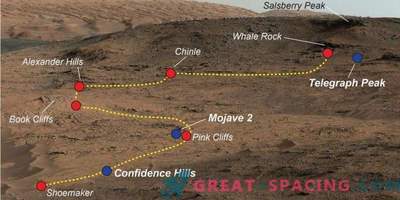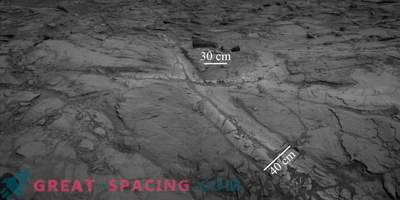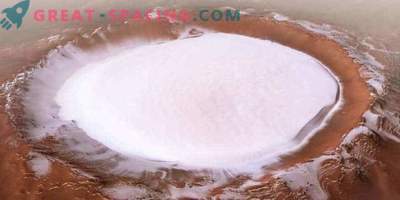
Once upon a time this complex structure of the ancient river delta transported liquid water over the Martian surface. The image was obtained using the color and stereophonic visualization of the CaSSIS surface on the ExoMars orbiter. To create such photographs, the camera uses a motor to rotate a telescope and take pictures from different angles.
The remarkable shape of the delta arises from sediments that are deposited by the river when it enters slow water, like a lake or the sea. The Nile Delta is a classic terrestrial example. Similar formations were able to be seen on Titan (Saturn's moon) and Mars.
The red planet no longer has liquid water, but in the picture (especially on the left), it is noticeable that it once played an important role in the development of Mars. In addition, water ice can still be found on the surface, and the recent discovery of Mars Express provided a pocket of water in a liquid state below the surface.

The fan-shaped deposit covers a thickness of 100 m and is located in the Eberswalde crater on the territory of the southern Martian hemisphere. The image was mined on November 16, 2018. Created in a false color. Laminated rocks (delta deposits) are marked in white, yellow, purple and blue.
Oxidized iron deposits are yellow, hinting that the stones have changed due to the presence of water, and blue shows less modified materials. Everything suggests that over time, the impact of liquid water decreased, as the environment could change. After the deposition of delta deposits in an ancient crater lake, some materials accumulated to cover most of the delta and connecting channels. Later, secondary materials were washed away, exposing the inverted relief of the structure. The Delta is located in the Eberswalde shock basin with a width of 65 km, which is almost completely covered with discarded material from the younger and larger neighboring Holden crater. Another example of the Martian delta can be found in the crater Yezero, which was recently chosen as the landing site for the NASA Mars 2020 rover. ExoMars, which is also planned to be launched in 2020, will be guided by the Oxia Planum plains, ancient and rich in the past, with water.
The European Space Agency (ESA) has been exploring the Red Planet for more than 15 years, starting with Mars Express, which arrived on Mars at the end of 2003 (still continues to work). In April, TGO will complete the first year of research. It “sniffs” the atmosphere in search of faint traces of gases that hint at the presence of active biological or geological processes. Also, the device is engaged in mapping the distribution of underground water ice.
ESA and NASA are preparing for the next stage of the Martian study - the return of the sample. NASA's rover in 2020 should take surface samples and transfer them to the second or third mission in small containers (put into orbit).











































